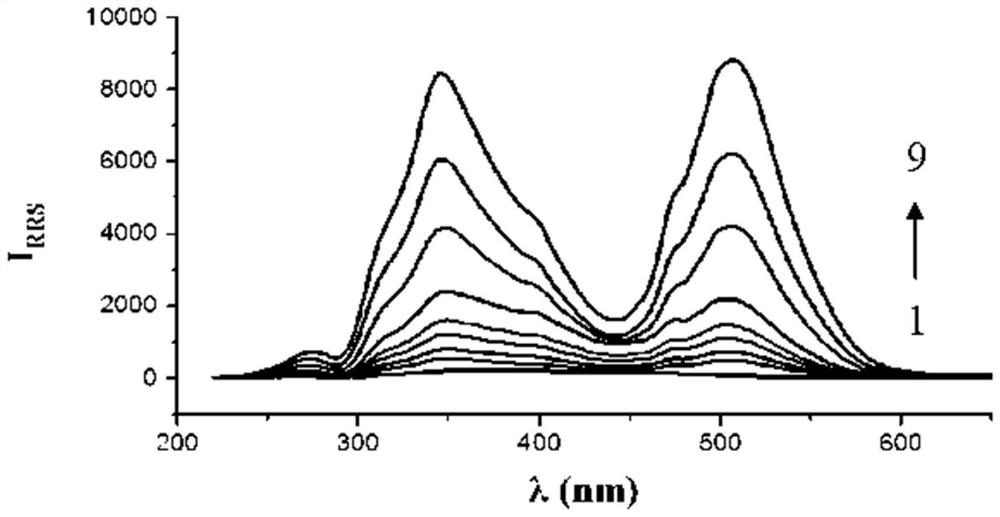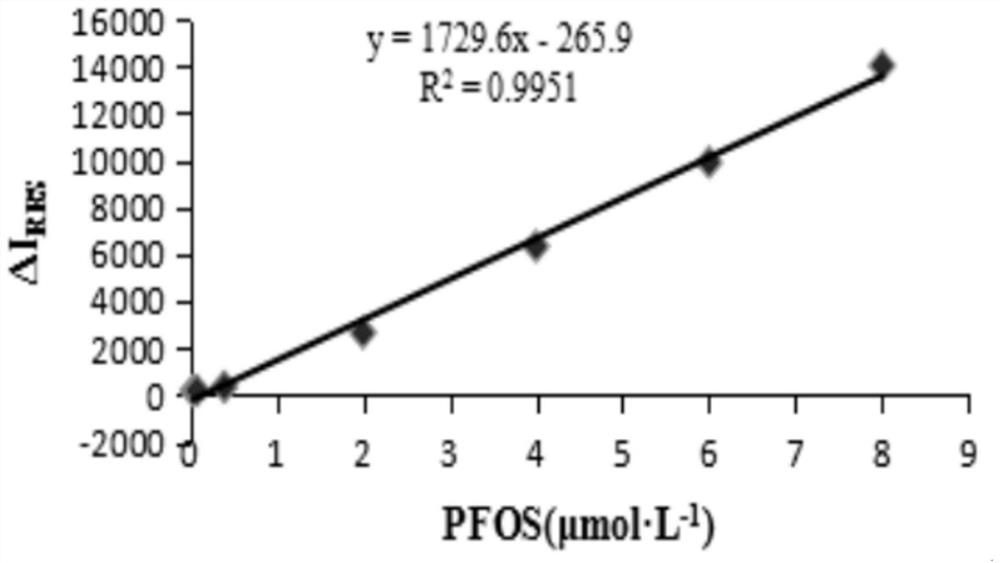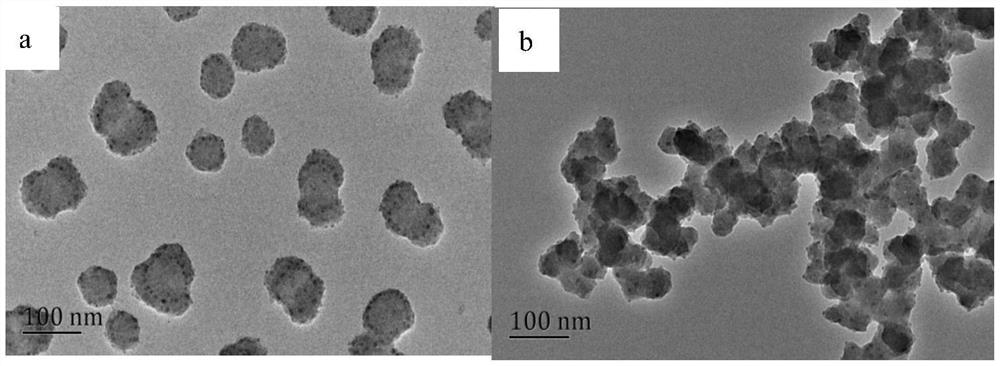The method and application of dual-wavelength resonance Rayleigh scattering method for the determination of perfluorooctane sulfonic acid
A perfluorooctane sulfonic acid and resonant Rayleigh scattering technology, applied in the field of environmental monitoring research, can solve the problems of long analysis time, complicated pretreatment process, and expensive instruments, and achieve high sensitivity, good selectivity, and easy operation Effect
- Summary
- Abstract
- Description
- Claims
- Application Information
AI Technical Summary
Problems solved by technology
Method used
Image
Examples
Embodiment 1
[0031] The drawing of the standard curve of embodiment 1 perfluorooctane sulfonic acid concentration
[0032] 1.1 Main instruments and reagents
[0033] Main instruments: F-2500 fluorescence spectrophotometer, 2100F transmission electron microscope, precision acidity meter, electronic balance;
[0034] Reagent preparation:
[0035] 2.5×10 -3 mol / L toluidine blue stock solution: Weigh 0.0934g toluidine blue into a 100mL volumetric flask, dilute to the mark with water, mix well, and store in a 4°C refrigerator for later use.
[0036] BR buffer solution: Take 0.04mol / L mixed acid solution of phosphoric acid, boric acid and acetic acid and mix with 0.20mol / L sodium hydroxide solution, and then use a pH meter for calibration.
[0037] Perfluorooctane sulfonic acid stock solution: the prepared concentration is 4.0×10 -3 mol / L perfluorooctane sulfonic acid and stored in a 4°C refrigerator for later use.
[0038] 1.2 Method
[0039] Draw the standard curve of ΔI and PFOS concent...
Embodiment 2
[0041] Embodiment 2 selectivity evaluation
[0042] To evaluate the selectivity of the method, 4×10 pairs of common anions and metal cations were examined -6 mol / L perfluorooctane sulfonic acid determination. After adding the interfering substances in Table 1, the RSD of the change in ΔI value was within ±10%.
[0043] It can be seen from Table 1 that, except for Cu 2+ ,Cd 2+ , Fe 3+ Except for some interference, most other anions and cations do not interfere with the determination, while Cu 2+ ,Cd 2+ , Fe 3+ It can be removed by cation exchange resin, which shows that this method has good selectivity for the determination of perfluorooctane sulfonic acid.
[0044] Table 1 Effect of Coexistence
[0045]
Embodiment 3
[0046] Embodiment 3 mechanism research
[0047] In order to investigate the reaction mechanism, the "toluidine blue" system (2.5×10 -5 mol / L toluidine blue) and "toluidine blue-perfluorooctane sulfonic acid" system (2.5×10 -5 mol / L toluidine blue+4.0umol / L perfluorooctane sulfonic acid+pH4.0's BR buffer solution), the results are as follows image 3 (a) and 3(b).
[0048] from image 3 (a) It can be seen that in the BR buffer solution with a pH value of 4.0, toluidine blue is uniformly dispersed in the system, from image 3 (b) Toluidine blue and perfluorooctane sulfonic acid aggregated after the interaction to form a larger ion association, indicating that in the acidic BR buffer solution, toluidine blue and perfluorooctane sulfonic acid were electrostatically combined, The two form ion associations, which cause the enhancement of the resonant Rayleigh scattering signal.
PUM
 Login to View More
Login to View More Abstract
Description
Claims
Application Information
 Login to View More
Login to View More - R&D
- Intellectual Property
- Life Sciences
- Materials
- Tech Scout
- Unparalleled Data Quality
- Higher Quality Content
- 60% Fewer Hallucinations
Browse by: Latest US Patents, China's latest patents, Technical Efficacy Thesaurus, Application Domain, Technology Topic, Popular Technical Reports.
© 2025 PatSnap. All rights reserved.Legal|Privacy policy|Modern Slavery Act Transparency Statement|Sitemap|About US| Contact US: help@patsnap.com



